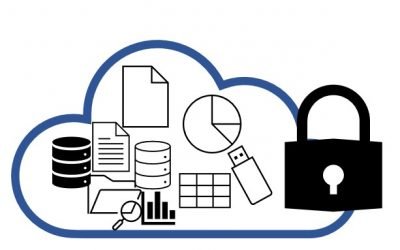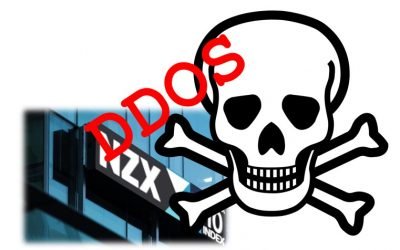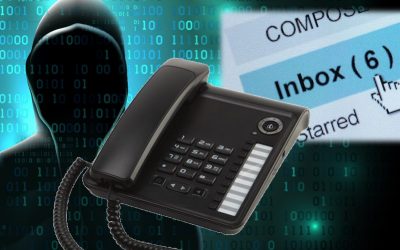“A cybercriminal only has to be lucky once, while a defender has to be lucky every minute of every day.”
– Combating Ransomware – A Comprehensive Framework for Action: Key Recommendations from the Ransomware Task Force.
The message we hear from governance boards over and over is ‘can you prevent hackers from stealing our data?’ Every time there is a high-profile attack, the calls get louder. As cyber security attacks become more frequent, the awareness of this activity increases exponentially.
The simple reality is that cyber-crime is now a mega-business. The cost and effort to combat cyber security threats grow all the time, and while nothing is guaranteed, there are things we can do to reduce your risk.
It means stepping up our collective cyber security game. New tools, new processes and new staff awareness. The protections that seemed excessive a year ago now seem to be inadequate. We have to keep adding new tools and services so that you can select a level of protection that you are comfortable with, and like your insurance, you need to reassess this every year.

What do you need to think about to protect your organisation?
1. The biggest risk is people and processes.
We suggest making a representative group and mirroring the practice of a Health and Safety committee. Have a ‘Cyber Security’ committee that spends time thinking about how someone could accidentally give away confidential data – start by thinking about how your data is held, where it is held, if it is confidential, and who has access to it. Next up are simple things like credentials. For example, if a client calls up for anything, from a question to a password reset, how do you verify who they are before providing any confidential info. Inside the company and out, people are the biggest risk to cyber security, and the security of the information your company holds.
2. We all know about malware and ransomware but…
Malware and ransomware typically get in through software bugs, and the best answer to this cyber security threat is to ensure everything is patched. Do you get regular reports to show that everything is patched or do you trust that it is done? “Everything” can be quite a long list but you can divide it up by types of machines (servers, laptops etc). Patching isn’t just for Microsoft tools, but everything that you use – Adobe, Google, and so on. Digital security is crucial across your network, even on mobile devices.
3. We’re all aware of antivirus but today we need to go further.
A good level of cyber and information security requires a more intensive end-point protection and personal firewalls, even for computers that stay behind the corporate firewall. That’s because it’s surprisingly common for ‘guest’ machines to connect to networks, for example, to support visitors, and you simply don’t know what state their devices are in and what viruses they may introduce.
4. Common attack vectors include “phishing”. The best defenses are:
-
-
○ Regular phishing tests, to see how aware your colleagues are.
○ Cyber Security briefings and awareness training to help everyone stay alert and support each other, both via eLearning and in-person presentations. Kinetics provides Cyber Security training in NZ
○ URL scrubbing – testing the URLs people click on BEFORE the site opens to warn you before you inadvertently browse to potentially infected websites.
-
5. The Darkweb!
It pays to be aware that some of your data is ALREADY on the darkweb. It will mostly be credential information scavenged from historical hacks of sites like Sony, LinkedIn, Marriott, and many others. Occasionally this will surface up to you as an email that states your account name, and password for a particular site, along with a threat, for example, “We know what you have been up to, pay a ransom or we will share this publicly”. If you recognise the username and password and it’s a common one that you use, then this threat can be very compelling.
The best defense is to ensure everyone uses unique passwords for everything, and the best way to do that is with a secure password vault tool.
6. Multi-factor authentication!
MFA isn’t infallible, but in conjunction with the items above, it’s a very important layer of cyber security. We regularly see compromise attempts on Office 365 in particular, and these are being defeated by simple steps like enforcing multi-factor authentication, and where possible, limiting logins to territories that people log in from. For example, unless you have people currently in eastern Europe, then you can simply block access from IP addresses from those countries. MFA should be on EVERYTHING, not just Office 365 but also the less common sites your people access.
7. Shadow IT Detection…!?
Looking at the first item on the list, you will be amazed at some of the tools in use by your people. It is extremely common for people to set up an account on an external website, or install an extension to get a job done. They often just use their email address and make up a password. That means that if they leave your organisation, they can still log in with the email address – the webtool doesn’t know they’ve left! Even worse, you don’t know how secure the tool is, and often you don’t even know about the tool at all! Shadow IT can hugely compromise the security of the data and information your organisation holds on to.
8. Microsoft have baked some excellent protections into Microsoft 365. Are you using them?
Microsoft has for example, ‘data leak protection’ to help set up a regime where Office 365 can detect confidential data (eg credit card numbers, health records, and so on) and then permit or prevent certain actions – for example preventing emailing a spreadsheet with more than say 5 of these records on it, or at least warning you before you do. It can also warn when it detects unusual behaviour such as copying or deleting large numbers of files. The trick is that this needs to be turned on, configured, and, above all, maintained and monitored.
9. Consider vulnerability scanning on a regular basis.
Vulnerability scans are based around CVE (Common Vulnerability and Exposures) and CVSS (Common Vulnerability Scoring System) and are maintained by First.org, a global forum for response and cyber security teams. CVE’s can describe vulnerabilities in software on any connected device, from baby monitors to virtual appliances, CVE’s can be found everywhere and anywhere. A deep vulnerability scan is intensive. In addition to scanning devices, it will attempt to use common login and passwords to brute-force hack devices.
Read some of the latest news on Cyber-Security
Zero-Trust IT Security
'Zero-Trust' is a tough headline. Zero-trust in a world where we trust people all the time is an unpleasant concept. We trust that when we order a package online, that the vendor will take our order and not just our money, that our product will be passed to a courier...
HAFNIUM Microsoft Email Attack
Over the last few days, you may have read about a zero-day attack impacting Microsoft Exchange Servers. We became aware of this vulnerability on Wednesday last week (it was discovered on the 2nd in the USA so we were on to it immediately, allowing for time-zones) . ...
5 simple steps to stay cloud-cyber-secure
We’ve posted repeatedly about cyber-security and the need to be more vigilant and more careful, and we’ve shared real-world stories to reinforce the concern. It’s a concern then that we still see a number of organisations that remain reluctant to increase their...
Cyber-risk mitigation – why Multi-Factor Authentication (MFA) is vital, but NOT enough
We keep making the point that nothing can guarantee you won’t be hacked. But you can, and must, mitigate your cyber-risk. We think tools like Multi-Factor Authentication is crucial for protecting your IT systems – and MFA should be on EVERYTHING you use – your email...
The Worst Hack in US History
In the last week, we’ve seen two major successful attacks on critical US IT management and Cyber security tools. The first we learned about was on FireEye which is one of the leading and most trusted cyber security tools, used by much of the Fortune 500. ...
Look out for more ransomware in 2021
2020 saw a crazy amount of ransomware attacks. We've warned repeatedly of the increasing sophistication and organisation of these bad actors. Names like RangarLocker and Dharma are cyber-businesses or do it yourself cyber-crime kitsets designed to cause havoc for...
DDOS – Distributed Denial of Service Attack (aka what went wrong at the NZ Stock Exchange)
Denial of Service (aka what went wrong at the NZX?) In September the NZ Stock Exchange was the victim of an attempted extortion via a DDOS attack. The attack took them offline serval times over a number of days. Many business are now asking, what is DDOS and could...
Keeping our Security tools up to speed
Cyber-crime is estimated to earn criminals US$7 Trillion a year That sort of money buys cyber criminals a lot of resources. It’s no surprise then that cybercrime has its own support industries. You don’t need to access the "Darknet" to purchase hacker tools. Many...
GOOD PROCESS WASN’T GOOD ENOUGH – SCAMMERS STILL WON
In August we all heard about Team NZ falling prey to a $2.8 million invoice payment fraud. It was the now-familiar story of a fake or hacked email, asking for payment to go to a different bank account. We should all be familiar with these tales by now. I’m sure that...
What is Double Key Encryption and why should you care?
Double Key Encryption (DKE) is coming soon to Microsoft 365 (E5 plans required) Like the name suggests, this is even MORE secure than the levels of encryption previously seen. Microsoft are saying that you need it if: You want to ensure that only you can ever decrypt...









